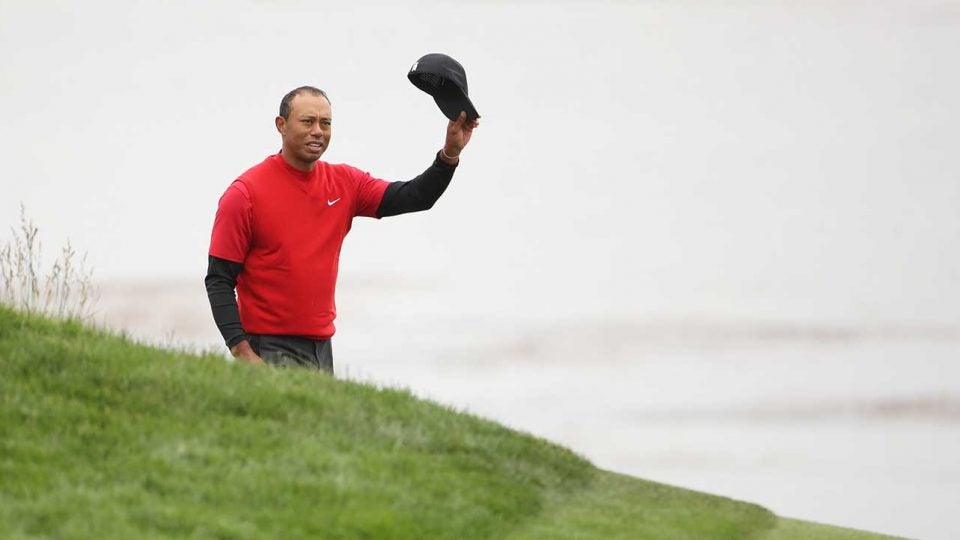
Lessons from Pebble Beach: The new Tiger, U.S. Open brutality, flying too close to the sun and more
Gary Woodland held off the relentless Brooks Koepka to win the U.S. Open and claim the first major title of his career on Sunday at Pebble Beach Golf Links. While Woodland stole the show on Sunday evening, there was plenty more that took place on the Monterey Peninsula during U.S. Open week. Here, our staff reflects on its most memorable moments in our Lessons from Pebble Beach.
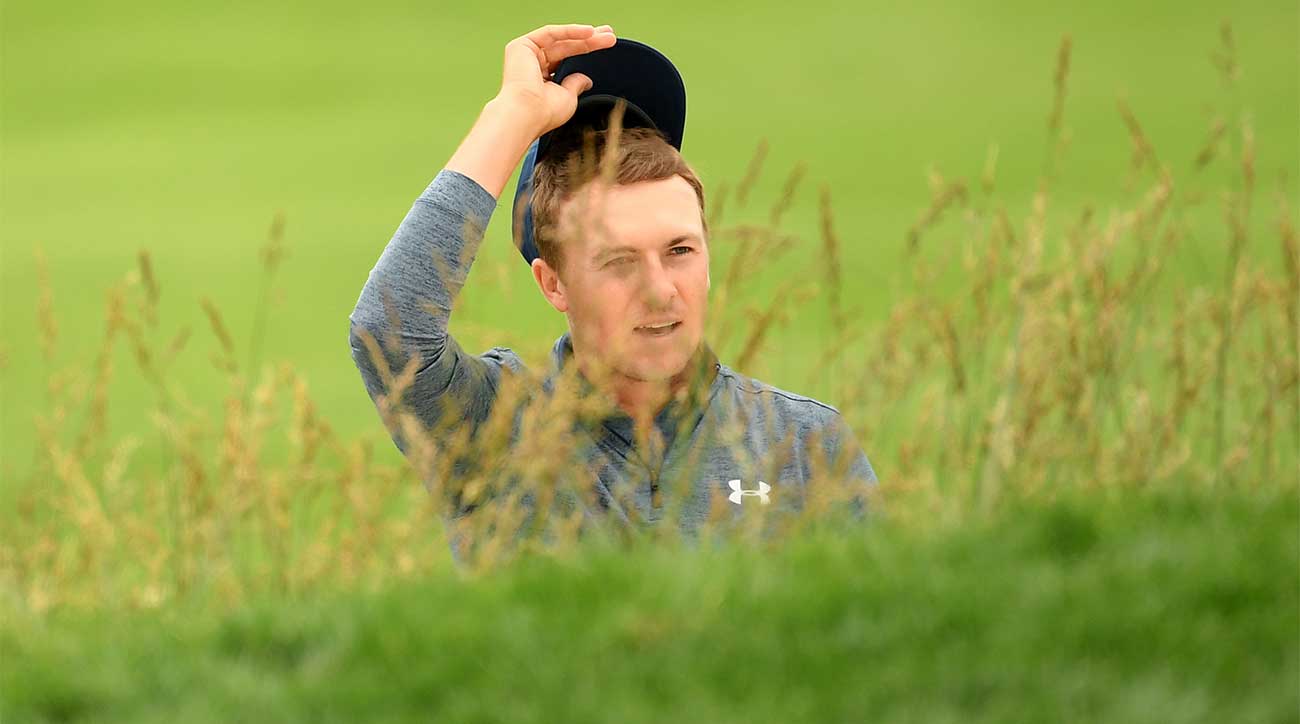
The United States Golf Association may have avoided controversy last week — Hurrah! — but the players in the 119th U.S. Open did not. On Thursday, Jordan Spieth lit into his stone-faced caddie, Michael Greller, for mis-clubbing Spieth on Pebble Beach’s par-4 8th hole. “Two perfect shots, Michael,” Spieth barked, in an exchange captured by Fox’s well-placed mics. “You got me in the water on one and over the green on the other.” You, lol.
Later in the round, Denmark’s Lucas Bjerregaard, who has twice won on the European Tour and was playing in his third U.S. Open, tugged not one but two tee balls on the par-5 18th into Stillwater Cove. After his third tee shot mercifully found the fairway, Bjerregaard went full-Hulk, hurling his driver into the water. (Sadly, footage of the fling never emerged.) A day later, again on 18, it was Patrick Reed’s turn. Lying four in the juicy rough in front of the green, Reed muffed his chip, advancing the ball all of about two feet. Reed’s scorecard paid a price for the miscue and so, too, did his 61-degree wedge, which he promptly lowered onto his right knee and snapped cleanly in two.
The message here is that if you recoiled watching (or reading about) these mini-dramas, you’re looking at them all wrong — you should revel in the humanness of these moments. Pebble was not the shin-kicking test that has defined Opens past, but it still doled out its share of punches and made the field bob, dodge, wince, bleed and, best of all, emote. Golfers wrestling with their emotions is what makes the Open, what separates it from the endless other tournaments at which the robo-golfers of the PGA Tour stoically pace the fairways as if they were filled not with blood and guts but wires and circuit boards. These outbursts aren’t pretty or gentlemanly or what we “expect” from world-class golfers, but that’s the magic of the U.S. Open: by exposing the flaws and weaknesses of our heroes, it brings us closer to them.
— Alan Bastable
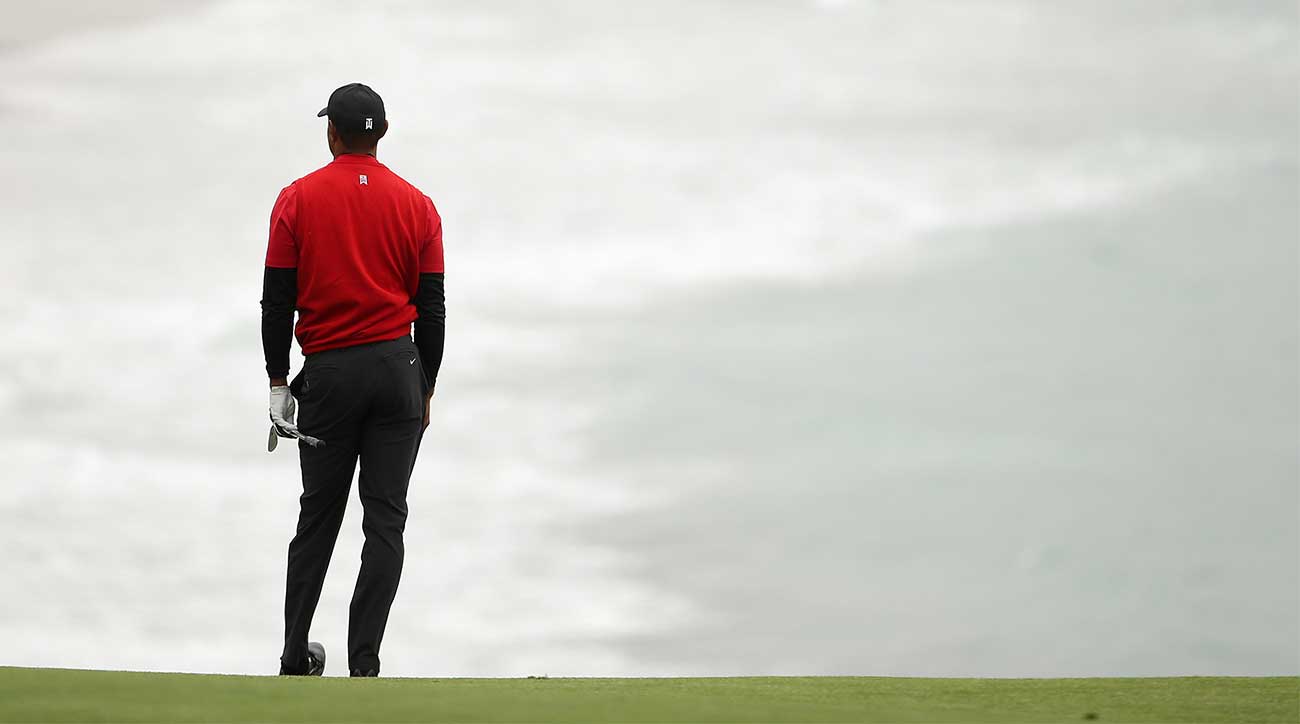
Tiger came off 18 on Sunday, and a man, old enough to be his father and then some, wearing the unofficial colors of the USGA (gray and blue), tugged on his arm. You were nervous for the man. You don’t touch Tiger Woods, as you don’t touch a royal. Not without an invitation to do so.
If you were there you will recall the withering look Woods gave a fan at Oak Hill at the 2003 PGA Championship, when the guy patted Tiger on the back after he played a recovery shot out of the rough, surrounded by a tight knot of fans.
Not that Tiger is not demonstrative. He was the co-author of one of maybe the most famous hugs in golf history, the one with his father, the exclamation mark to his win at the 1997 Masters.
Also, he’s far more physically demonstrative now than he used to be. You might have seen the casual, fatherly way he dropped an arm over Patrick Reed’s sagging shoulder at the Ryder Cup last year. Amazing. When Woods finishes rounds these days, he sometimes hugs young local students. He never needs an introduction and often uses their names.
But this was different, this modest tug of Tiger’s arm, unexpected even within the safe confines of the swath of green between the 18th green. Tiger was walking a straight line. The man approached him from the blind side. Tiger, still walking, turned his head, you might say warily. He had to be wiped-out after a long week in cold weather.
But then you could see a look of recognition washing over Tiger’s face. The man was Peter Ueberroth, 81, the former baseball commissioner and a Pebble Beach owner. More significantly, for the purpose of understanding this little scene, he is on the board of Tiger’s philanthropic organization, the TGR Foundation. If you’re on that board, that means you’ve done something real in the name of education. After his own two children, and his golf career, Woods’s commitment to education is probably the third-highest priority in his life.
Tiger stopped. Tiger stopped! (He used to never stop.) He smiled, gave Ueberroth a hug, had a brief exchange with him, signed his card and hugged his own two children, on hand for Father’s Day. New Tiger.
– Michael Bamberger
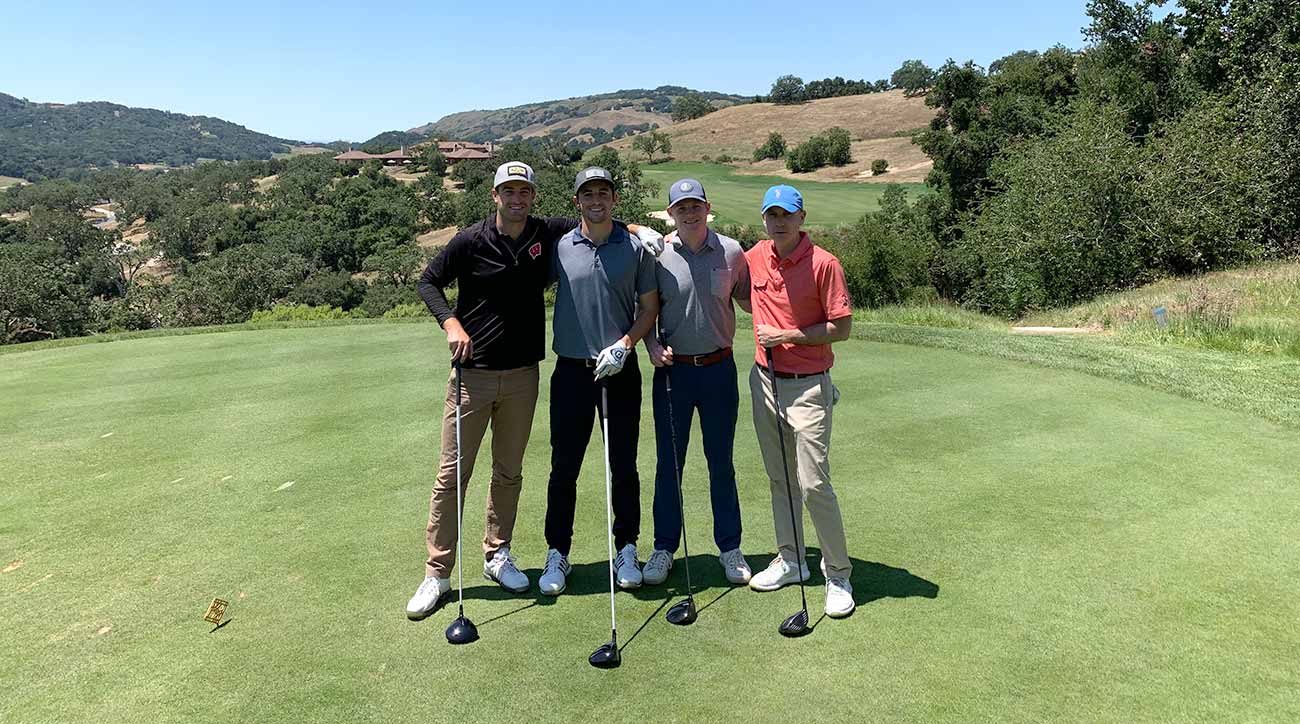
During our various work-week sneak-outs, I have now seen colleague Sean Zak play quite a few rounds of golf. In many ways, Zak, 27, is the avatar for the twenty-something golfer: Swings hard, hits it a ton — sometimes even in the right place — and has a short game that can bail him out or abandon him altogether, depending on the hole.
Zak plays to about an 11 handicap but has never shot in the 70s, a record that came under heavy pressure on Monday afternoon at the Santa Lucia Preserve, a Fazio design on a ridiculous piece of property some 45 minutes southeast (and a world away, in aesthetic, vibe, climate and playing style) from Pebble Beach.
The first tee shot demands just an iron, and Zak hit his hard and left, never to be seen again. Double bogey. But for the next 10 holes he captured some sort of magic. Fairways. Greens in regulation. Even a wedge stuffed close at No. 6 for birdie. When he dropped another birdie at No. 12, he got back to 2-over for the day with just six to play. Unprecedented, terrifying territory.
The fall came hard and fast. The 13th hole is a gettable par-5 but demands a forced carry and is not receptive to, say, a topped driver, nor a sliced provisional. Zak made a gritty 12-footer for triple. Then a double at 15. Bogey at 17 meant that he’d need birdie at 18 to stay under 80.
He gave it a valiant effort, gunning a chip shot at the hole and running it some 20 feet past, like Mickelson at Merion in 2013. This wasn’t to be his day. But the putt was still critically important: he and Josh Berhow were 1-down to Alan Bastable and myself, and this would make for a net birdie. He rammed home the putt, unleashing an unseemly scream as he did so. It wasn’t 79, but maybe next time will be. That’s the best part of the game, anyway: pursuing something just a little bit better.
— Dylan Dethier
ADVERTISEMENT

Pebble Beach is one of those rare golf courses, like Augusta National, that doesn’t just live up to its reputation — it surpasses it. It’s surprising in all the ways you’d expect yet somehow in none of the ways you’d suspect. The greens are so much smaller than they look on television, and the undulations so much larger. The 6th hole isn’t just uphill, it’s a miniature mountain. There’s no more devilish a pitch shot in golf than the 7th. The view from the 18th tee box is just as perfect as you can imagine, so beautiful that it somehow overshadows the impossibly tricky hole that follows. Water — (ocean) left, out of bounds right, two trees somewhere in-between and a postage stamp green at the end of it. Players make that hole look so easy, but see it or play it yourself, and you’ll probably walk away saying it’s among the toughest you’ve ever played.
Walking around the grounds at Pebble Beach is stepping inside the soul of American golf. The whole place is just magical. The U.S. Open is the the crowning glory of tournament golf, but there’s nothing that tops Pebble.
— Luke Kerr-Dineen
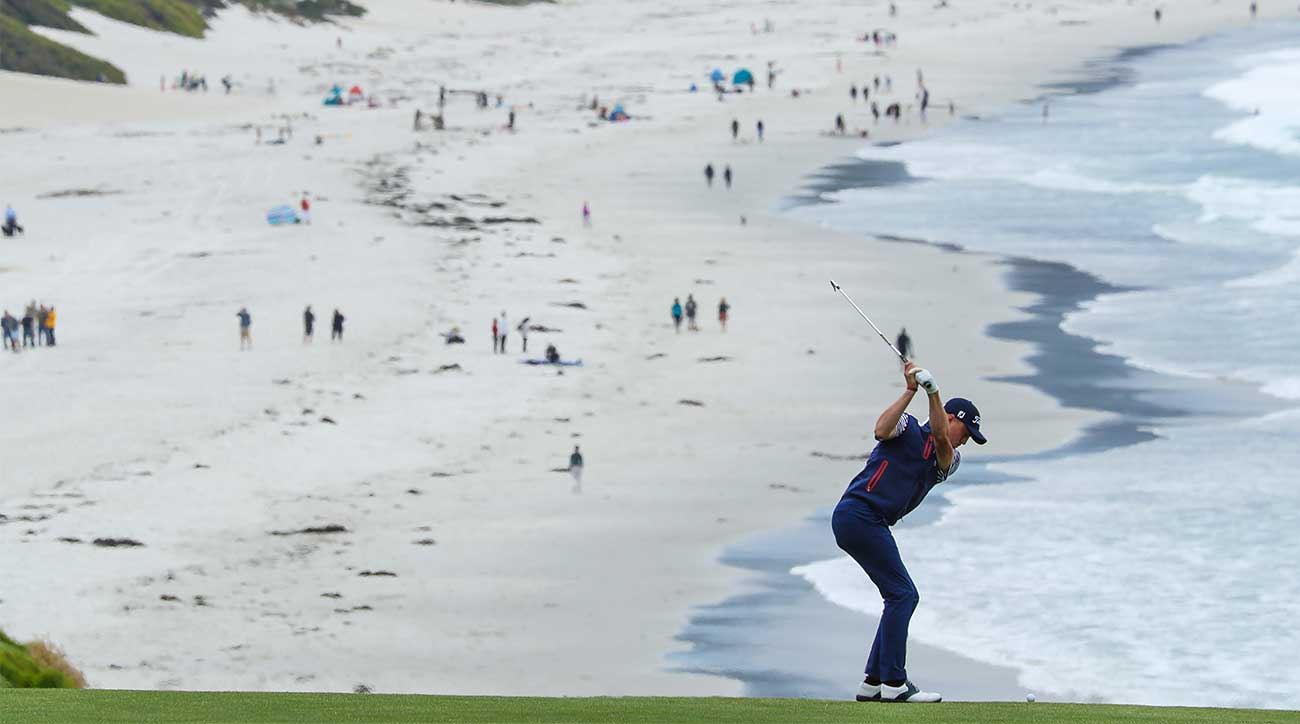
There’s viewing experiences and then there’s Pebble Beach viewing experiences. Please do not confuse the two; they are not alike. Many courses, even some major venues, have houses along the property, but the Pebble houses are not houses as much as they are eye-popping mansions with backyards as perfectly manicured as PBGL’s greens.
All week the lucky homeowners and homerenters gathered in backyards with grills smoking, drinks flowing and TVs perched (Tony Finau even rented one of the few houses along the 19th fairway). Curious spectators walking couldn’t help but ogle. But who could blame them? It was hard to find better, more comfortable seating.
Even one player who missed the cut got in on the act. Justin Thomas is still trying to find his form after a wrist injury forced him to miss a handful of starts earlier this year, and the 2017 PGA champ shot 73-73 and missed the cut. No matter, on Sunday as Brooks Koepka was beginning his charge toward Gary Woodland’s lead, Thomas was among a dozen or so people perched out on the makeshift deck just left of the 2nd green. Just as Koepka was completing a ridiculous up-and-down to save par, Thomas was watching intently from less than 20 yards away. He was basically in complete anonymity, as hundreds of fans looking on, many with their backs toward Thomas, had no idea a man with $28 million in career earnings was standing feet behind them. Thomas must have loved the low-key vibe; although he surely would have rather been on the course. One thing is for sure — at Pebble Beach, some viewing spots are just too good to pass up, no matter who you are.
— Josh Berhow

Traveling the golf beat is outrageously fun but the Tour calendar is brutally unsentimental: Masters Sunday often falls on Easter, the Players used to conclude on Mother’s Day, and the date change for this year’s PGA Championship meant I spent my birthday flying cross-country. But by far the most merciless bit of scheduling is that the U.S. Open always concludes on Father’s Day. Over the years I’ve grown accustomed to awakening in hotel rooms thousands of miles from my four kiddos. I appreciate the calls and texts and occasional card stashed in my luggage but it is a glum ritual to eat a room-service breakfast alone, feeling sorry for myself.
But once a decade all that changes — the Open comes to Pebble Beach, and I get to sleep in my own bed and enjoy Father’s Day morning with my kids. In 2010 they were all 6 or under. Now, the “kids” are teens and tweens, so on this Father’s Day they were still asleep when I returned home from a mid-morning walk on Carmel Beach, puppy in tow. That was fine, as I was happy to start whipping up my specialty: chocolate- and cinnamon-chip pancakes. Must’ve been the smell, because one-by-one the little Ships emerged from their rooms and found me at the griddle. The hugs were as sweet as the pancakes. We sat around and chit-chatted, the U.S. Open telecast playing in the background.
It had been a busy week for me, and for them, too, since it was the start of summer break. I missed them, and was so happy just hanging out together my cheeks hurt from smiling so much. Work beckoned, but I kept finding reasons not to go. I stayed so long I wound up making the kids lunch, too. Finally I grabbed my computer bag and starting doling out goodbye hugs. Ben, 11, was confused for a second. Finally, he said,”I forgot you had to go to the U.S. Open!” For a little while I had, too. — Alan Shipnuck
ADVERTISEMENT

